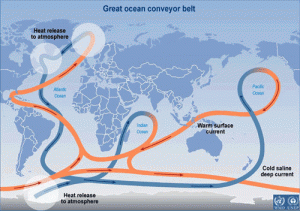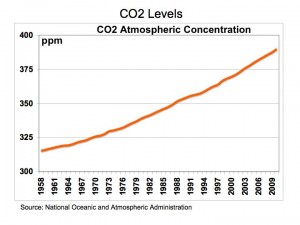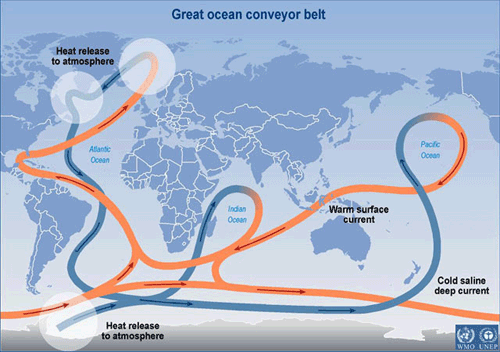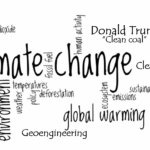With regular recurrence the Earth has endured 100,000 year cycles of continental glaciation throughout the Pleistocene Epoch starting approximately 2 million years ago give or take 500,000 years. What caused this disruptive climate change? Climatologists, geologists, oceanographers and astronomers believe that something happened to Earth’s axial inclination or tilt, or something happened to our orbit around the Sun leading to colder and longer winters at the poles and massive accumulations of snow that became ice. But what caused the last glacial period to start melting away 20,000 years ago?
I call the cause a trifecta event, three different causal interconnected links that induced the change that allows me to live in Toronto, a place once under more than 1.6 kilometers (1 mile) of ice. What were the three?
- Axial Wobble
- Ocean Currents
- Changes to CO2 Levels
Axial Wobble
For humans who have built modern civilization within a few thousand years, the idea that the Earth axis is not always stable, canted at an angle of 23.5 degrees, is hard to accept. We know today that the axial tilt is not constant. It changes. Not only does it vary from 24 to 22.5 degrees, sometimes it wobbles. One of those wobbles happened 20,000 years ago. The wobble meant the northern hemisphere received a lot more direct sunlight and that started the meltdown. The meltdown had an impact on the oceans, the next part of our trifecta.
Ocean Currents
In North America we learn about the Gulf Stream, the warm water current that flows from the Gulf of Mexico across the North Atlantic to warm up the shores of Europe giving that area of the world a more benign climate than areas of North America at the same latitude. Just compare London, England with Calgary, Alberta, both at 51 degrees north and you will see what I mean.
The Gulf Stream is part of a global conveyor belt of ocean currents (check out the map below). The technical terms for this phenomenon is Meridional Overturning Circulation (MOC). Warm water overrides cold water which is more dense and sinks. When freshwater from melting glaciers enters the ocean the outwash is even less dense than warm saltwater and displaces it.

That displacement is exactly what happened when our Earth experienced the axial wobble 20,000 years ago starting the glacial meltdown. With the North Atlantic flooded with freshwater, equatorial water from the South Atlantic was blocked from moving north.
Now comes the final piece of our trifecta puzzle.
Changes to CO2 Levels
Our oceans are great carbon sinks. In fact 43% of the CO2 produced by animals, humans and industrial pollutants gets absorbed into the ocean. CO2 is delivered to the deep ocean by cold water as it sinks bonding with other elements in the ocean to form dissolved carbonate, CO3, and hydrogen carbonate ions, HCO3. Phytoplankton and other creatures extract carbon from ocean water and combine it with calcium to form calcium carbonate, CaCO3, the material of shells and other exoskeletons.
Where CO2 dissolves into cold ocean water, it does the opposite in warm where it readily escapes. And because warm water is surface water the escape is into the atmosphere. So our South Atlantic starting less than 20,000 years ago began to get warmer and with no place to go because of the freshwater flooding the North Atlantic, released CO2 into the atmosphere.
How much CO2? The answer is quite a bit. CO2 levels which tend to be lower during period of glaciation, rose from 180 parts per million (ppm) to 260 ppm. With more CO2 in the atmosphere the Earth experienced a global runaway greenhouse effect with temperatures rising and accelerating the glacial melt.
The only bump on the road to rising temperatures was a second massive influx of freshwater about 11,600 years ago, a period called the Younger Dryas, when water from Lake Agassiz (the site of the current Great Lakes in North America) rushed into the North Atlantic after the ice dam in the St. Lawrence River valley broke. That vent caused a 1,000 year stoppage in rising atmospheric temperatures but they climbed right back.
Today we are experiencing rising CO2 levels of a similar magnitude to the one that happened to end the Ice Age (see the chart below). What does that mean for the Earth? Will we continue to see glacial meltdowns? And if we do would the melting of Greenland’s ice sheets or the Antarctic cause another MOC sending us into a period of cooling.

Studying historic changes to atmospheric composition and temperature has all scientists agreeing. Our climatological record provides us with evidence of significant and abrupt changes. Can we afford to ignore rising CO2 levels?









